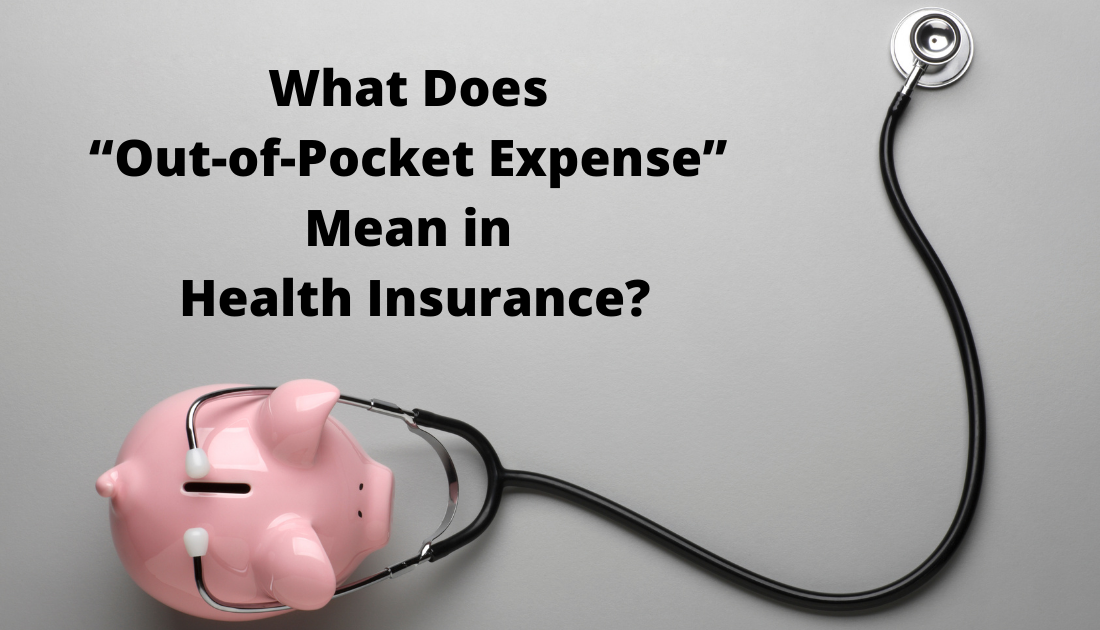What Does “Out-of-Pocket Expense” Mean in Health Insurance?

Just the Essentials...
- Out-of-pocket expenses refer to the costs of otherwise covered services your insurance doesn’t pay for. Premiums do not count toward out-of-pocket expenses, but paying higher premiums typically means your out-of-pocket expenses are lower.
- Typically, you must spend a certain amount of money out-of-pocket (called a deductible) before your insurance comes into effect. Afterwards, you’ll still pay a small portion of your fees out-of-pocket.
- Insurers are required to pay 100% of your healthcare expenses once you reach your plan’s out-of-pocket maximum.
- A plan with high premiums and low out-of-pocket expenses is not always the best choice, as certain benefits are available to people with high deductible plans, like cost sharing reductions and health savings accounts.
Considering Health Insurance Cost
Cost is one of the most important factors to consider when choosing a health insurance plan. Often, the costs associated with maintaining quality health insurance can go well beyond your monthly premium. While a plan on the marketplace might have lower premiums, this alone does not necessarily mean the plan is affordable, especially if you need a lot of coverage. If you have a high deductible, you might end up paying thousands of dollars in out-of-pocket expenses. So, why do high deductible plans even exist in the first place?
Well, the answer to this question is actually quite simple. Health insurance is all about risk. You’re at risk of needing medical care at any given time, and various factors can cause this risk to increase or decrease. Without insurance, you’ll likely need to pay a large amount of money for healthcare out-of-pocket; a less than ideal situation to be in.
How does health insurance risk work?
Insurance works by spreading out that risk over many people. Everyone contributes via their premium payments, and the insurance company manages the funds and negotiates with providers to lower costs. When an emergency occurs, the payment needed is taken from the fund rather than the person needing care.
This system works best when operating under the assumption that everyone has the same needs. However, in reality, we all know that healthcare needs are different for everyone. This is one of the main reasons why health insurance companies work to determine individual risk for every client.
For example, a healthy, 25-year old fitness fanatic has a very different level of risk than a 58-year old with a chronic illness. The healthy 25-year old may only go to the doctor a few times a year, while the 58-year old will likely need to see specialists and pay for expensive medication regularly. In this case, the 58-year old not only has a much higher risk of needing emergency care due to their condition, but they also have a guaranteed drain on the collective fund.
Insurance providers typically address this issue by offering a variety of plans. In a perfect world, the 58-year old will choose a plan that provides guaranteed coverage for their condition and can easily cover them if they have an emergency. In exchange, they’ll probably need to pay a higher premium.
The 25-year old, on the other hand, is deemed unlikely to need extensive medical care. In that case, they can choose a plan with lower premiums but which may not cover all of their expenses in an emergency. They’ll still receive coverage for the services they use, like doctor’s visits and preventative care, but the insurance company is essentially betting on the 25-year old not needing to pay an expensive medical bill that year.
Both people are still paying into the same pool and splitting the risk between them, but the younger enrollee is choosing to take on a higher level of personal risk in exchange for paying less into the pool.

Understanding the Out-of-Pocket Maximum
It’s important to remember that in the above example, the 25-year old is taking on more risk, not all of their risk. The insurer is still obligated to provide coverage for them. Insurers are required by law to step in after you pay a certain amount of money out-of-pocket. This is called the out-of-pocket maximum. There is a legal limit to how much you’re obligated to pay, but your plan determines the exact amount. Plans with higher premiums often have lower out-of-pocket maximums.
Once you hit that maximum, your insurer will cover 100% of the covered benefits. So, if our hypothetical 25-year old suffers a medical emergency and gets sent a $20,000 medical bill, they’ll only need to pay $8,700 of it — even less if they spent money on other medical services earlier in the year. If they need any further care afterward, their insurance will cover 100% of it until the end of the year, at which point they are likely to switch to a plan that better fits their needs.
If the 25-year old didn’t have any insurance at all, they’d be on the hook for the full $20k, plus any additional services they might need during the year. In this scenario, even an inexpensive, catastrophic insurance plan is leagues better than nothing.
Any money you pay out-of-pocket for in-network coverage counts toward your maximum. However, it’s important to note that your premium does not contribute to this amount, nor does any out-of-network coverage you receive. Staying in-network is still your best bet for coverage.
Still, the out-of-pocket maximum is a tremendous amount of money for most people. That’s why most insurance plans come into effect much, much sooner.
Other Insurance Terms to Keep in Mind
Deductibles
A deductible is the amount of money you need to pay out-of-pocket before your insurance kicks in. This is typically much, much lower than the out-of-pocket maximum, and some plans don’t even have a deductible at all. In most cases, your deductible is inversely proportional to your monthly premium: the higher your premium, the lower your deductible, and vice-versa. Your deductible counts toward your out-of-pocket maximum, so certain inexpensive plans set their deductible to be equal to that amount, only going into effect once it is reached. Once you reach your deductible, insurance will cover most, but not all, of your medical services.
It should be noted that your deductible does not apply toward preventative care or regular doctor visits: insurance companies like to keep their clients healthy since it reduces the risk that they’ll make a large claim later. As such, services designed to keep you healthy, like vaccinations and screenings for certain diseases, are always covered by your insurance at no cost to you. Your insurance will also cover visits to an in-network physician, though you will still need to make a copayment.
Coinsurance
After you meet your deductible, you’ll still need to pay a portion of your healthcare costs. This is called coinsurance and is also determined by your plan. For instance, if you have an 80/20 plan, that means that your provider covers 80 percent of your medical costs. The remaining 20 percent is paid out-of-pocket until you reach your out-of-pocket maximum. Like with your deductible, your coinsurance is linked to your monthly premium.
Copayment
A subset of coinsurance, a copayment, or “copay,” is the amount you pay for things like doctor’s visits, prescription drugs, and other healthcare services. Some plans include copays as part of your deductible: you pay 100 percent of the costs until you meet your deductible, after which you only pay the percentage determined by your coinsurance rate. Other plans cover copayments immediately: you pay a fixed amount, but that amount does not apply to your deductible. It does, however, apply to your out-of-pocket maximum.
Like your deductible and out-of-pocket maximum, coinsurance and copayment are often linked to your premium: higher premiums mean less cost-sharing between you and your insurer.
What about insurance plans for those with low income?
If you have a lower income, things might seem a bit hopeless: you want to minimize your risk, the best way to do that is by paying higher premiums, which you may not be able to afford. You either pay up now and run the risk of having paid too much if nothing happens. Alternatively, you don’t pay upfront and risk financial ruin in the event of a catastrophe. To a certain extent, that is true, but there are benefits in place specifically to make things easier for lower-income Americans.
The most obvious is the premium tax credit, determined by your income. This reduces your monthly premium by a significant amount, allowing you to afford a plan with fewer out-of-pocket costs. However, there are two other benefits you may qualify for, which can help ease the burden significantly.
Cost Sharing Reductions
Healthcare plans are given medal rankings to indicate their out-of-pocket costs. Silver plans, which average a 70/30 split between the insurer and beneficiary, are solidly middle of the pack in most cases. Silver plans, however, have a unique perk: cost-sharing reductions.
If you qualify (typically due to income, though members of federally recognized tribes can also qualify in some cases), the government will cover part of your deductible, coinsurance, and copayments, while also lowering your out-of-pocket maximum. This means you can get a plan with effective gold or platinum level coverage at silver level prices. However, this only applies to silver plans specifically — bronze and catastrophic plans don’t apply.
What About a Health Savings Account?
Certain plans are considered high-deductible health plans (HDHP), meaning they have a deductible that the average person is unlikely to meet. As of 2022, the minimum amount is about $1,400 for individuals and $2,400 for families, but most HDHPs have significantly higher deductibles, approaching the legally allowed out-of-pocket limit. These plans are inexpensive, but they also come with a unique perk: they qualify you for a health savings account (HSA).
An HSA is a tax-advantaged savings account that lets you set aside money, before tax, toward future healthcare expenses. Like some retirement accounts, you can only deposit a certain amount of money per year and have to pay income taxes and strict penalties if you withdraw money for non-medical reasons. However, this money does not go away. It rolls over from year to year, and switching to an ineligible plan only means that you cannot deposit more money into it. Some HSA accounts even let you invest the contents to grow them over time, allowing them to accrue money even when you can no longer deposit directly.
If you’re young, healthy, and have a decent income, choosing an HDHP over a more comprehensive plan might be worthwhile to take advantage of the HSA. It builds up a buffer that can be used to pay for medical expenses (including your deductible) later in life, and it transforms into a pseudo-retirement account when you turn 65, allowing you to withdraw money without penalty (though you will still need to pay taxes).

Putting It All Together
Let’s go back to our earlier example: Our 25-year old fitness buff is young, healthy, and at low risk for injury. They make a decent amount of money, but instead of putting it toward an expensive insurance plan, they elect to enroll in an HDHP and contribute the maximum individual amount (about $3,600) to their HSA each year. They do this until they turn 30, at which point they no longer qualify for the catastrophic plan they were using. Luckily, they don’t need anything more complicated than regular doctor visits and screenings, so their inexpensive plan still fully covers them.
After five years, they have a whopping $18,000 in their HSA, which is theirs, even though they’ve switched to a plan that no longer qualifies for an HSA. They could choose to invest this money to increase it even further, but let’s say they let it sit for the sake of argument.
At 35, they suffer a medical emergency that would cost them $20,000 without insurance. However, say they have a gold medal insurance plan with a $500 deductible and a $4,000 out-of-pocket maximum. This plan has an 80/20 split: insurance covers 80 percent of all costs after meeting the deductible, while they pay the remaining 20 percent.
Right off the bat, they need to pay $500, which they can cover from their HSA. Their insurance covers 80 percent of the remaining $19,500, or $15,600. That leaves a coinsurance balance of $3,900. However, because the out-of-pocket maximum for this plan is $4,000, and our example already paid their $500 deductible, they only need to pay $3,500, which their HSA can easily cover.
The insurer would cover the remaining cost and any additional healthcare expenses throughout the year. What would have been financially ruinous before is now completely covered, tax-free, without any impact on our 35-year old friend’s daily budget.
That’s the real secret: health insurance is fundamentally a game of risk management, but while your insurer is only playing year to year, you have the opportunity to play across your entire life. Understanding the benefits of your insurance plan is key to setting you up for long-term success and a healthy, happy future.
If you need help finding the right insurance plan for your needs, our licensed agents can help. Enter your zip code below, or call us to start comparing plans today.
Key Resources:
Choosing a Health Care Plan: Plan Categories
What is the Out-of-Pocket Maximum Limit?
What is a deductible?
What is Co-insurance?
What is a Co-Payment?
What is Cost-Sharing Reduction?
What is a High Deductible Health Plan?
What is a Health Savings Account (HSA)?
What is a Catastrophic Health Plan?
